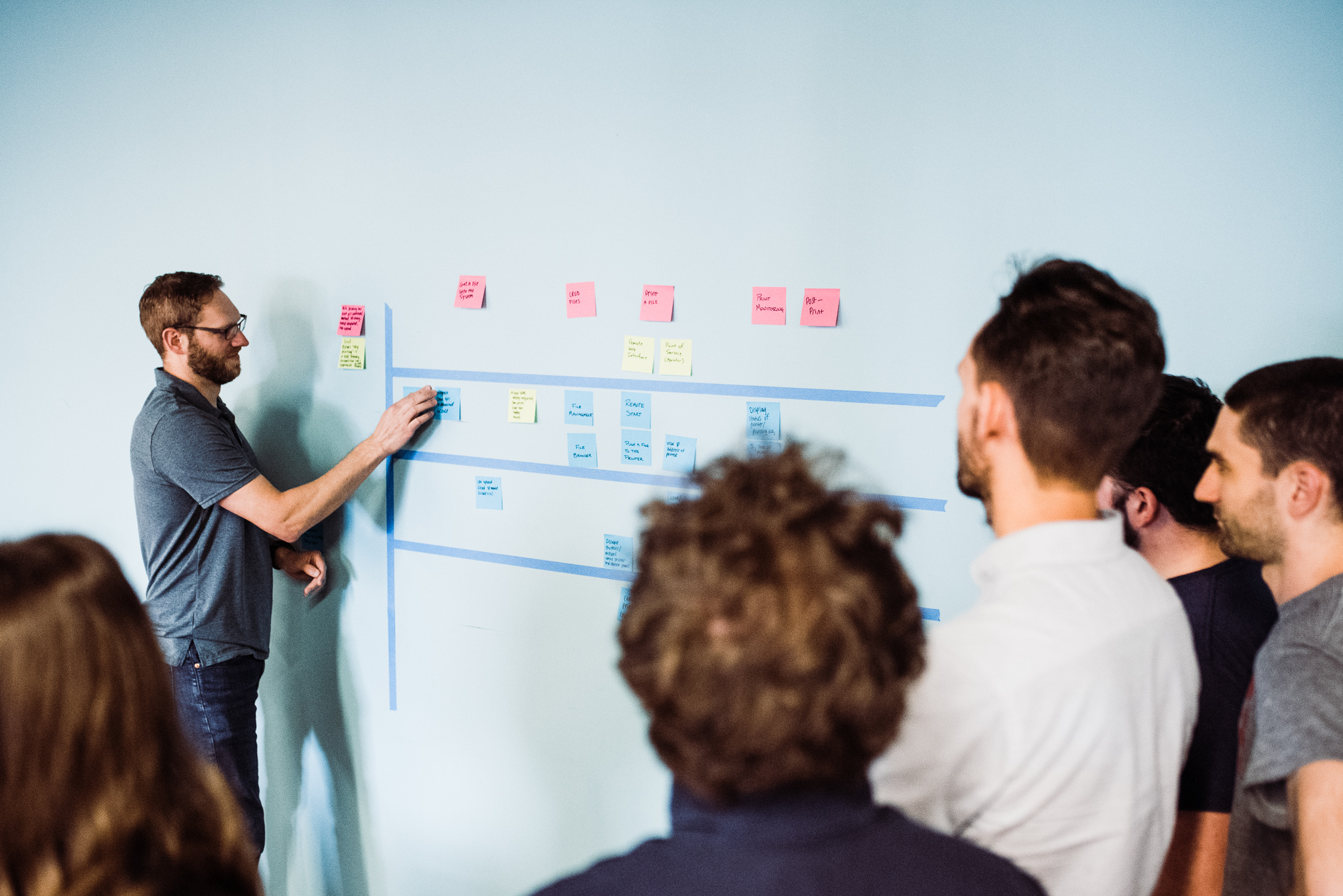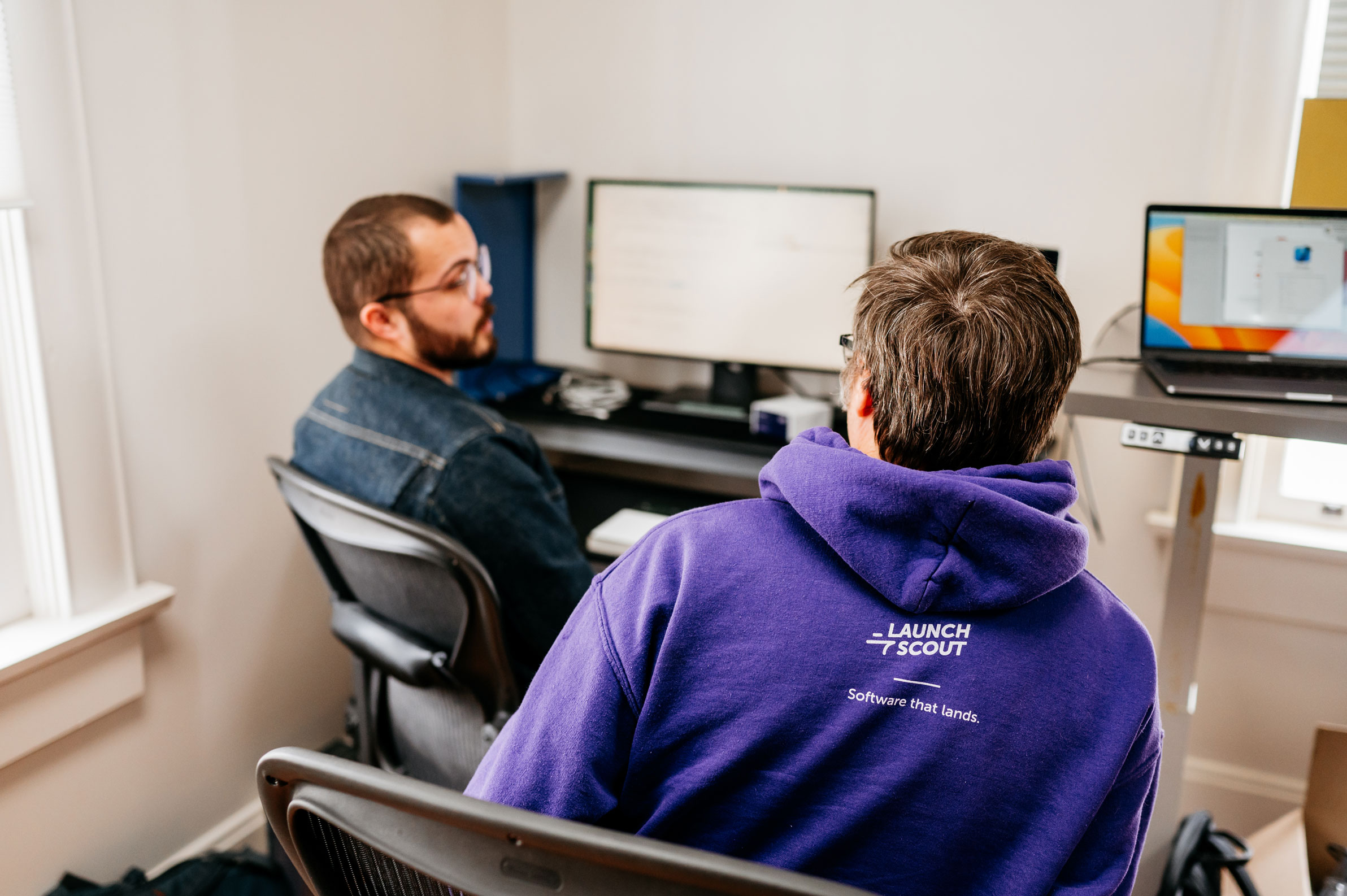
16 March 2021
You're Here and You Want to Be There
Over the last 18 months, we’ve worked with half a dozen different clients in the early, concept stages of their start-ups. All were embarking on the journey of product development, but they were each in different stages of the process and were approaching it from different directions. Over the years, we’ve gained insight and experience that provides us with the ability to explore the mindset of these early-stage entrepreneurs. Here are some of the obstacles and challenges we’ve faced with them, and what helped them get to the next level.
Painting the Picture
It is incredibly common to have a clear idea of the product or service you want to create and to feel ready—eager even—to act on it. It is also incredibly common that clear communication of that idea and building excitement with others becomes a daunting task. The remedy is to build a shared understanding of your vision. Simple exercises like story-mapping and whiteboarding are fairly quick ways to get the ideas out of your head and onto paper, and then you’re one step closer to making your idea come to life.
Getting Buy-In
One of the biggest challenges you’ll likely face in the early stages is getting literal buy-in from investors. Slide decks are a quick way to get early validation (we’ve seen plenty of them) but to really sell your idea, you will likely need more. You’ll want to have something, perhaps an interactive prototype or higher-fidelity mockups, to help investors empathize with your end-users and how your idea will help them. The easier it is for investors to understand the impact your idea has on the industry, the easier it is to get them on board.
The Next Steps
Jumping straight into product development is expensive and very risky. Even if you have all the funding you need, understanding the path to get from where you are right now to your go-to-market goal is difficult when you’re still standing at the starting line. We’ll be the first to admit that estimating an entire product build based on a concept, or even early mock-ups, can be (dare we say, will be) error-prone. Rather than only focusing on the finish line, we’ve found it to be better to set smaller, more digestible milestones along the way, validating with users as you go. And if you have someone on the team who can maintain a higher-level view of things and keep the team moving toward the end goal, you’ll be setting yourself up for success.
Dipping Your Toes In
You’re feeling good about your idea but aren’t sure how the market will respond? Having something tangible to take to market and test with customers will provide hard data that can help refine your idea or even change your focus. This is a great way to make sure you’re putting your best foot forward when you finally go live, but it is very easy to overdo it and spend too much money on something that is meant as something to learn from. Narrow your focus to the root problem you’re trying to solve for your customers and build a bare-bones solution for it to see if they bite. That can look like an interactive prototype or the beginning of your software solution, either way, the key is to stay focused to validate you’re headed in the right direction.
Many of the people who come to us with ideas have them thought through pretty well and it’s clear that they are passionate about their solution. Clients often come to us looking to push their idea further and to get more clarity on how to realize the solution. We’ve found that in almost every case, the collaborative discovery process sheds light on the things they hadn’t figured out yet. As part of that process, we often build a clickable prototype to help these clients get to the next stage—whether that’s finding investors or validating product-market fit. It is something that can be shown to multiple types of audiences and provide engagement and alignment around the idea. In the next few weeks, we’ll explore more specifically what to do with a clickable prototype once it’s produced and how it helps move things forward.



